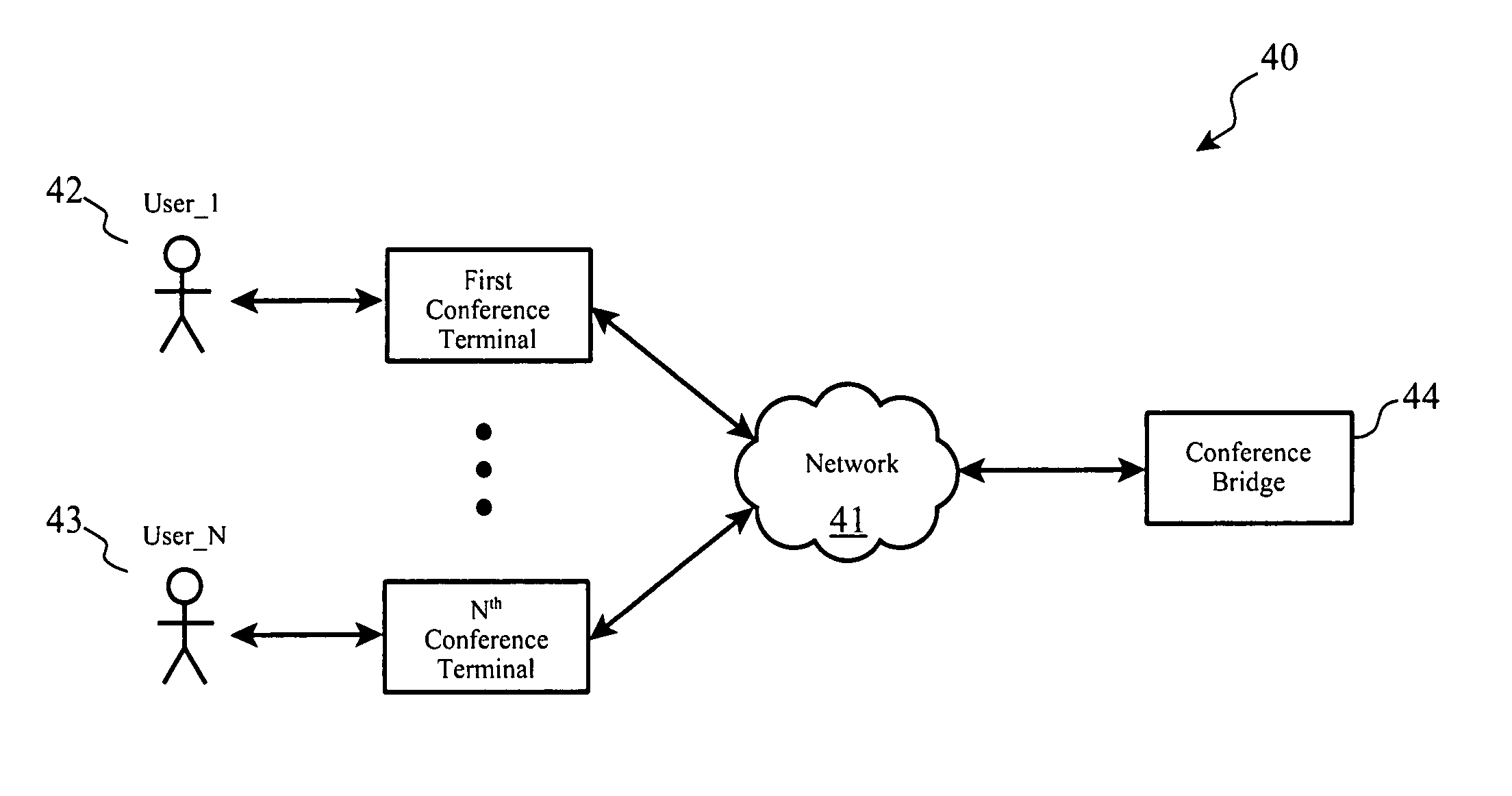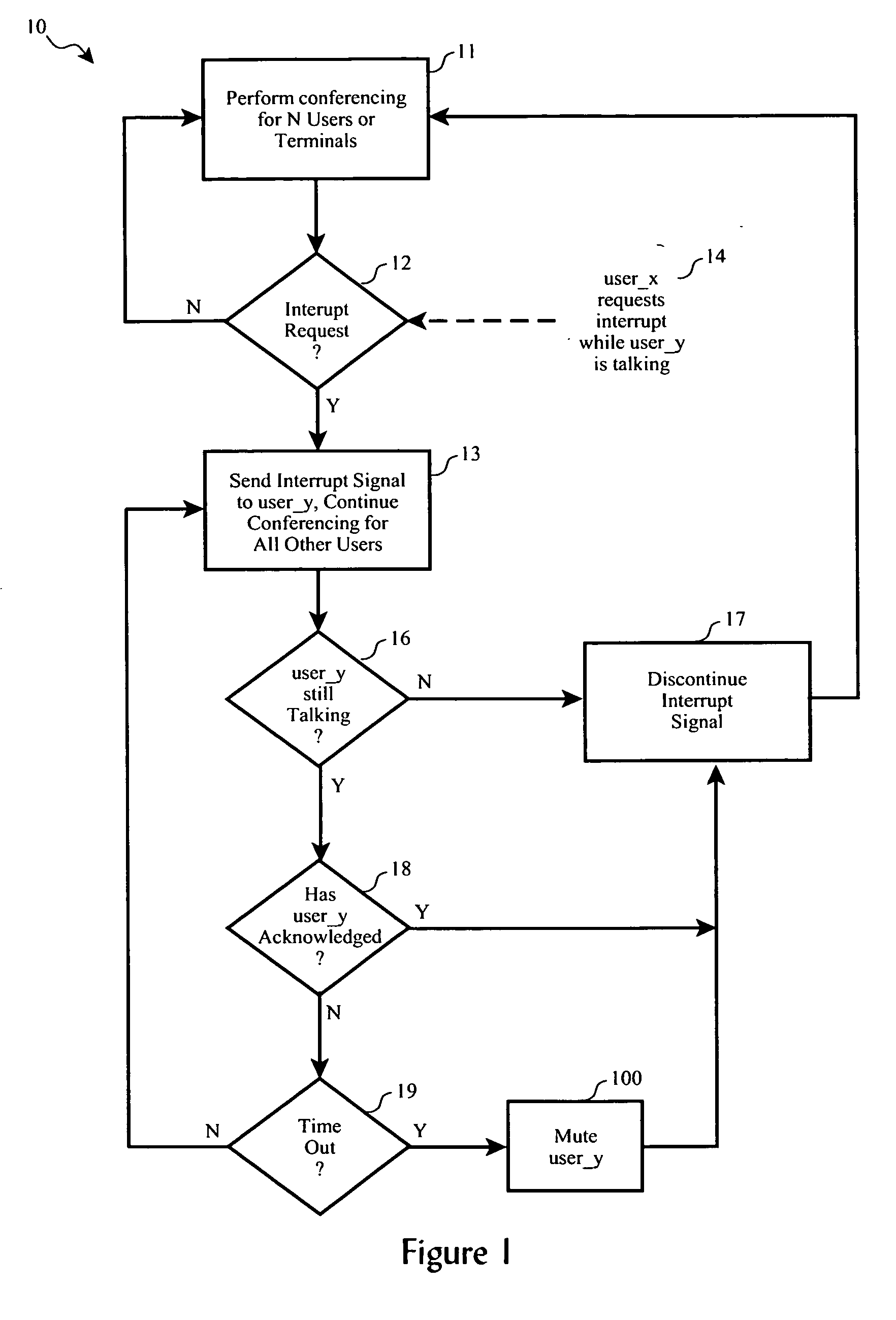System for selective teleconference interruption
a technology for interrupting teleconferences and teleconferences, applied in the field of methods and systems for managing teleconferences, can solve the problems of not being available, affecting the natural flow of conversation, and being difficult to achieve, and achieves the effect of convenient deployment and low implementation cos
- Summary
- Abstract
- Description
- Claims
- Application Information
AI Technical Summary
Benefits of technology
Problems solved by technology
Method used
Image
Examples
Embodiment Construction
[0044] We will now disclose one or more example embodiments for better understanding of the present invention. While the following descriptions and discussion will be related to audio-only conferences, and especially to telephone-based audio-only conferences, it will be readily recognized by those skilled in the art that the present invention may be employed in various embodiments to enhance other types of conferences, including but not limited to Internet-based audio-only conferences, and video conferences.
[0045] Turning to FIG. 3, a time diagram (30) in which time progresses from left to right (32) is shown for a traditional conference call, during which a first user USER—1 is talking for a period of time (33). During this time, the voice signal from USER—1 is broadcast (36) to all of the other members (37) of the conference.
[0046] Customarily, if another potential speaker, such as USER_2 wished to interrupt, he or she would also speak for a period of time (34), or press a DTMF ...
PUM
 Login to View More
Login to View More Abstract
Description
Claims
Application Information
 Login to View More
Login to View More - R&D
- Intellectual Property
- Life Sciences
- Materials
- Tech Scout
- Unparalleled Data Quality
- Higher Quality Content
- 60% Fewer Hallucinations
Browse by: Latest US Patents, China's latest patents, Technical Efficacy Thesaurus, Application Domain, Technology Topic, Popular Technical Reports.
© 2025 PatSnap. All rights reserved.Legal|Privacy policy|Modern Slavery Act Transparency Statement|Sitemap|About US| Contact US: help@patsnap.com



